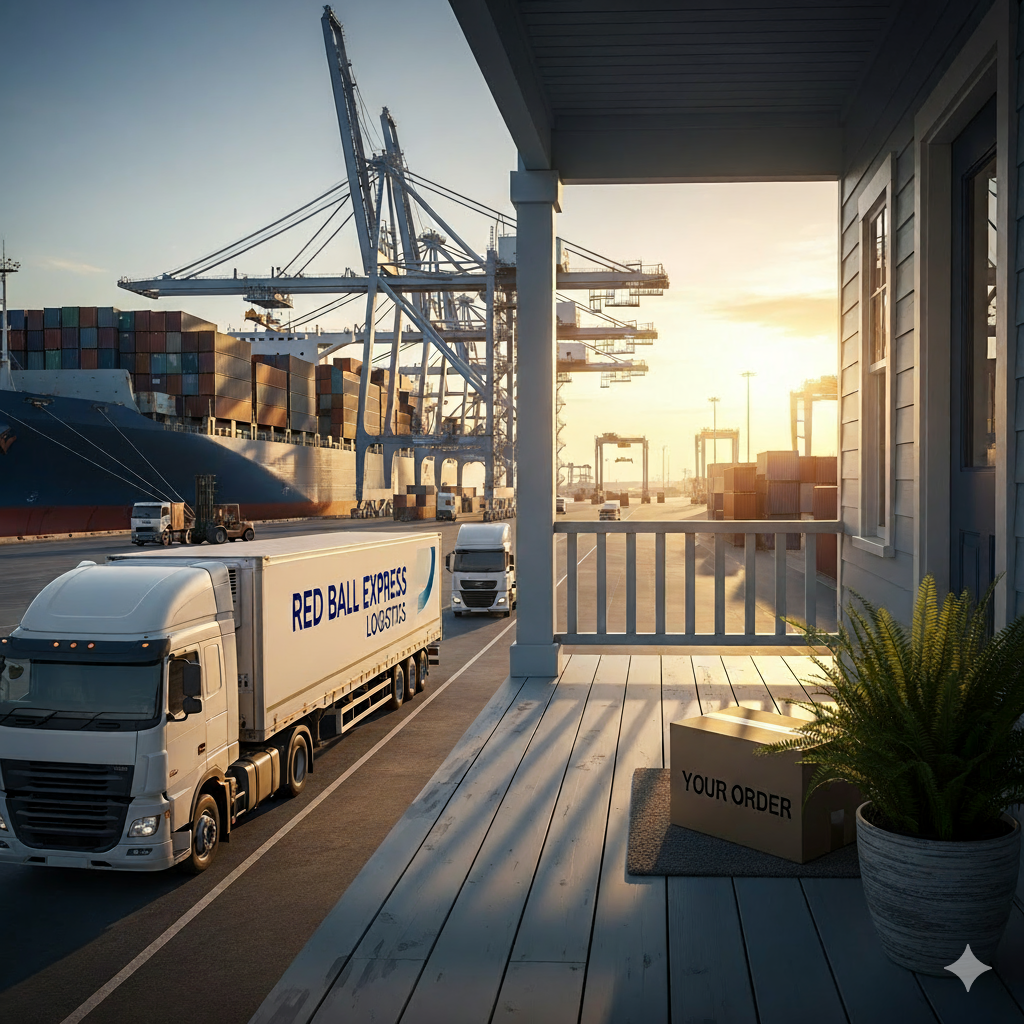From Port to Porch- The Critical Role of Trucking in E-Commerce Growth
September 18, 2025
Discover how trucking powers e-commerce growth — from port to porch. Learn the role of drayage, last-mile delivery, and technology in creating faster, smarter, and more reliable shipping.

In today’s digital-first economy, shopping no longer begins with a trip to the mall — it begins with a click. The rise of e-commerce has transformed consumer expectations, where fast, reliable, and transparent delivery is no longer a perk but a standard. While the digital storefront might steal the spotlight, the unsung hero behind every online order is trucking. From containers at the port to packages on the porch, trucking is the lifeline of e-commerce growth.
The E-Commerce Boom and Supply Chain Evolution
Global e-commerce sales are projected to surpass $7 trillion by 2025, fueled by the convenience of online shopping and the expansion of digital marketplaces. But this exponential growth brings challenges. Shoppers want two-day, next-day, and even same-day delivery. That speed requires seamless logistics operations, with trucking playing a critical role in bridging the gap between ports, warehouses, and consumers’ doorsteps.
Without efficient trucking, the supply chain would stall. Freight delays, capacity shortages, or poor routing can directly affect customer satisfaction and brand loyalty. In this competitive environment, the success of an e-commerce company often depends on the reliability of its trucking partners.
From Port to Distribution Center
Every online order starts long before a customer clicks “buy.” Products manufactured overseas arrive at major ports, where containers are offloaded from ships. Trucking companies then take the lead, hauling goods to distribution centers, warehouses, or fulfillment hubs.
-
Drayage trucking ensures containers move quickly from ports to nearby storage facilities.
-
Long-haul trucking moves freight across states or regions to centralized warehouses.
-
LTL (Less-than-Truckload) carriers consolidate smaller shipments for mid-sized e-commerce businesses.
At each step, trucking efficiency ensures goods are not only available but also ready for fast last-mile delivery.
The Last-Mile Delivery Revolution
Last-mile delivery — the journey from distribution hub to consumer’s doorstep — has become the battleground for e-commerce leaders. Amazon, Walmart, and Shopify-backed businesses are setting the bar for speed and transparency.
Here’s why trucking is critical in last-mile delivery:
-
Speed: Customers expect 1–2 day delivery, and trucking routes are optimized to meet these demands.
-
Flexibility: Smaller trucks and vans allow deliveries in urban, suburban, and rural areas.
-
Tracking: Real-time GPS and route optimization technology give customers accurate delivery windows.
Last-mile costs account for up to 53% of total shipping expenses, making efficient trucking strategies essential for profitability.
Technology Driving E-Commerce Trucking
Modern trucking has gone far beyond wheels and engines. The integration of technology has revolutionized e-commerce logistics:
-
Real-Time Tracking: Customers track packages from dispatch to doorstep.
-
Smart Routing: AI and GPS reduce fuel costs and delays.
-
Paperless Freight Solutions: Digital bills of lading (BOLs) and automated systems speed up operations.
-
Electric and Green Fleets: Sustainable trucking meets consumer demand for eco-friendly practices.
Companies that embrace these innovations not only reduce costs but also build stronger trust with their customers.
Challenges in Trucking for E-Commerce
While trucking is central to e-commerce success, the industry faces challenges that impact delivery speed and reliability:
-
Driver Shortages: The trucking industry is grappling with a shortage of skilled drivers.
-
Rising Fuel Costs: Higher fuel expenses increase delivery costs.
-
Congestion at Ports: Delays at major U.S. and global ports strain trucking timelines.
-
Sustainability Demands: Consumers are increasingly conscious about the carbon footprint of shipping.
Adapting to these hurdles requires collaboration between trucking companies, shippers, and e-commerce platforms.
The Future: Faster, Greener, Smarter
The future of trucking in e-commerce will be shaped by automation, sustainability, and efficiency. Expect to see:
-
Autonomous Trucks: Pilot programs are already showing promise in long-haul freight.
-
Electric Vehicles (EVs): Last-mile delivery fleets are rapidly shifting to electric.
-
Data-Driven Operations: Analytics will optimize inventory positioning and delivery routing.
These innovations will allow e-commerce businesses to meet customer expectations while reducing costs and environmental impact.
Why Trucking Will Always Be the Backbone of E-Commerce
Despite drones, micro-fulfillment centers, and futuristic logistics concepts, one truth remains: trucking is the backbone of e-commerce. Without efficient trucking, global trade would not connect seamlessly to local delivery. Every click-to-cart journey relies on trucks moving goods across highways, through neighborhoods, and up to the customer’s porch.
For e-commerce companies, choosing the right trucking and logistics partners isn’t just about cutting costs — it’s about creating customer loyalty and competitive advantage in a crowded marketplace.